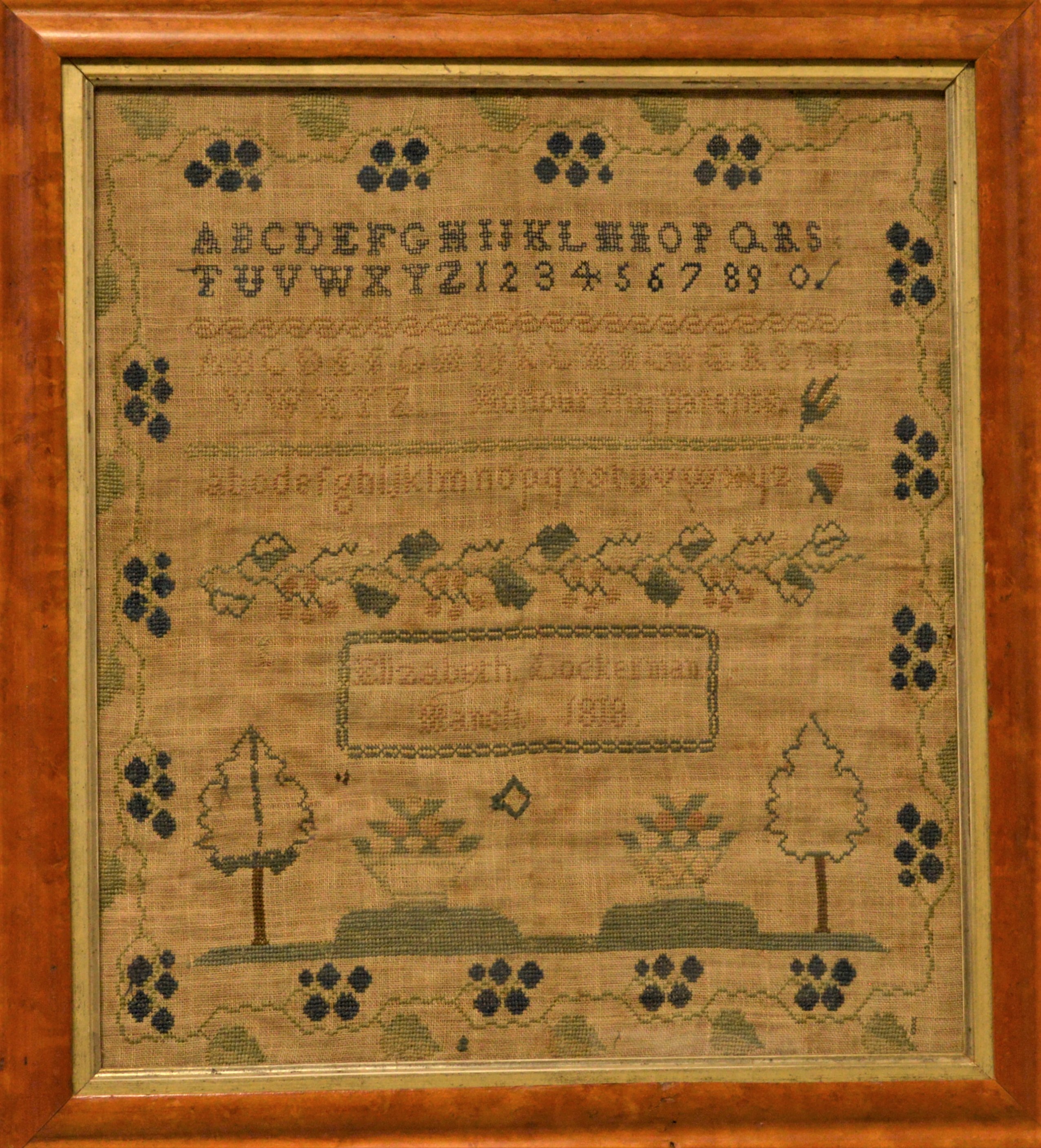Make a Sampler
It is a useful skill to be handy with a needle and thread! Years ago, people practiced their needlework skills by creating samplers. These pieces were both pretty and practical. Read the instructions below and create your own sampler.
- Download the Introductory Sampler or the Challenger Sampler and print the activity.
- Look at the different symbols. Each symbol has its own colour:

3. Use markers to colour the boxes in the colour that matches the symbol.
4. If you want to use different colours, that is okay too!
Are you curious to learn a bit more about samplers?
Lambton Heritage Museum currently has a sampler on display in our Collections Centre.

Elizabeth Lockerman sampler, on display at Lambton Heritage Museum
The word "sampler" comes from the Latin word exemplum (“an example.”)
Needlework was both a practical skill and an artistic expression. The earliest samplers in the 16th and 17th centuries were reference pieces. Embroiderers practiced forms that would be used in other projects. By the 18th and 19th centuries, the sampler became part of a young woman’s formal education. They featured letters, numbers, patterns, and sometimes Biblical verses. The sampler was often framed and shown in the young woman’s home. It was unusual for married women to create this type of embroidery.
The sampler currently on display at the museum is in an original bird’s eye maple frame. It was created by Elizabeth Lockerman in March, 1818. She chose to embroider the alphabet and numbers, as well as folk art symbols like vines and trees. She eventually settled in the Township of Enniskillen in Lambton County.

 Subscribe to this page
Subscribe to this page